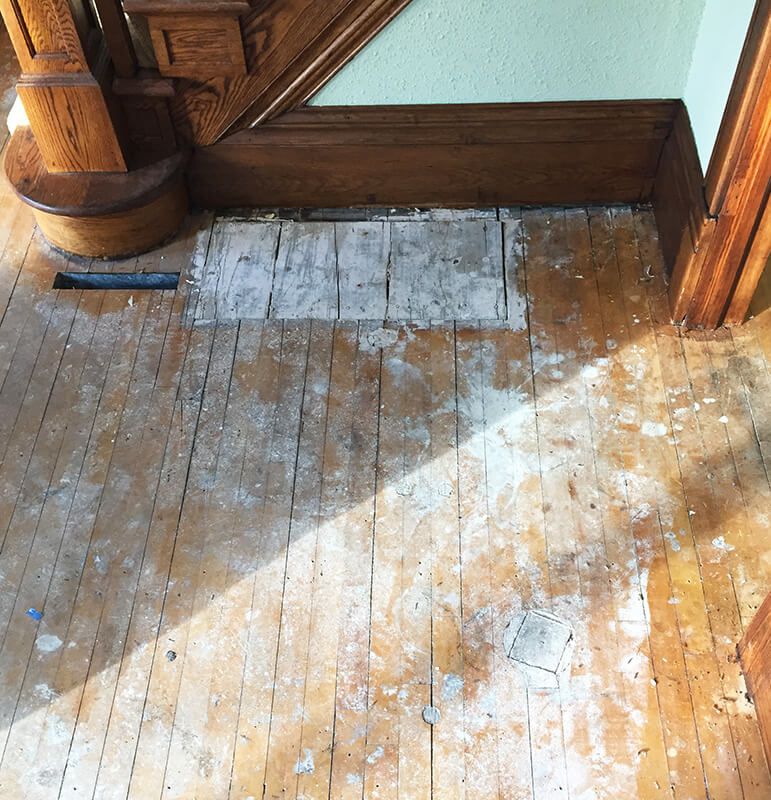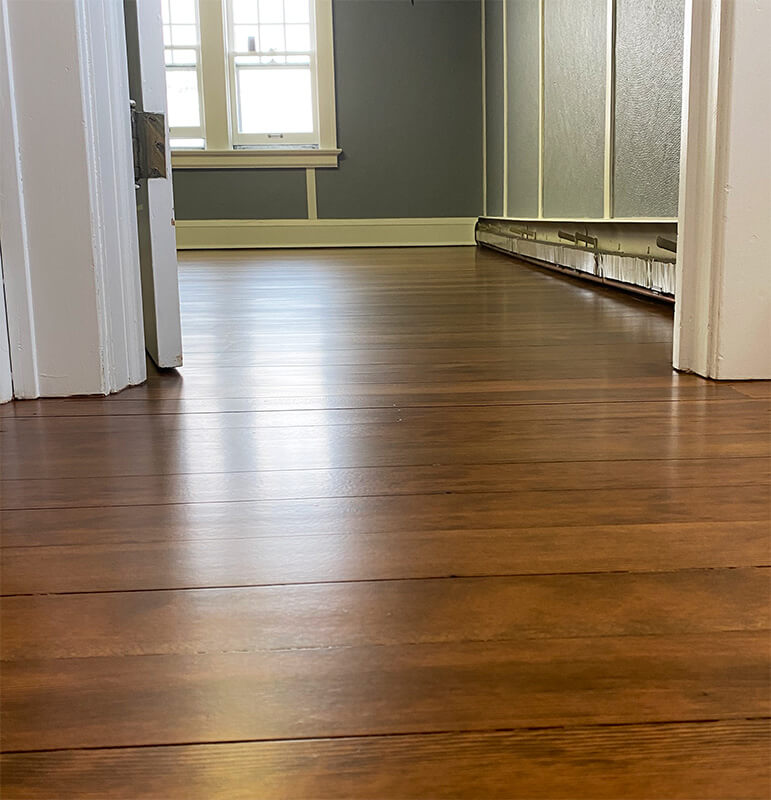How to Know If You Have Wood Floors In Your House
Have you ever wished you had hardwood floors throughout your home but know that a new hardwood floor installation is out of your budget? Well, don’t give up hope yet. If you live in a house built before the 1970s, there is almost certainly hardwood underneath that dingy carpet.

Although there is no hard and fast rule for knowing what kind of wood is in your home, judging only by its age, some strong tendencies coincide with the period of homes in Fargo and Moorhead.
Pre 1950's
There were few other options other than hardwood flooring in these homes. If you live in a pre-1950s home, unless someone has torn the floors out at some point, you have hardwood in your home! Although it is not uncommon for the kitchens and baths to have had the hardwood removed due to water damage, we rarely see hardwood removed in the other areas of the house.
- Living, Dining, Bedroom: Tend to have maple floors, occasionally red oak and white oak. (These older homes occasionally had Birds-Eye maple; however, Birds-Eye floors were often 3/8″ thick instead of 3/4.” If the floor is in good enough shape, you can get a sanding out 3/8″ thick flooring, but only one.)
- Kitchen, Upper Level: Tend to be Douglas fir which is softer than maple but looks beautiful when coated natural. Douglas Fir is always 3 1/4″ wide. Sometimes they continued the maple or oak throughout the kitchen and upper level on the more expensive homes.
- Staircase: Douglas Fir tends to be found in the smaller homes and oak in the larger, more expensive homes. Occasionally they used yellow birch for the staircase, which looks almost identical to maple, but a bit softer.

1950's and 1960's
Although other products such as linoleum were starting to get popular, houses in this era still predominantly used hardwood for flooring. As a result, 1 1/2″ red and white oak strip flooring was by far the dominant trend. The floors are either strictly red or white oak or a mix of both species.
- Living, Dining, Bedroom: 1 1/2″ red or white oak. Occasionally we find 2 1/2″ red oak, but very seldom do we find maple.
- Kitchen: By this point, kitchens moved to linoleum due to its ability to handle water and traffic. It’s uncommon for the kitchens to have hardwood.
- Upper Level: Although most of the 1950s and 60s houses were ramblers, we find some two-story construction as well. Usually, the same hardwood on the main level was in the upper level.
- Staircase: Almost always red oak.

1970's and 80's
These are the dark ages of hardwood flooring. Unfortunately, hardwood was not a trend, and you will most likely not find hardwood under your carpet in these homes.
It should be noted that cork flooring is found in houses of all ages and can be refinished just like wood. It’s not common, but we find it occasionally, mainly in dining areas.
